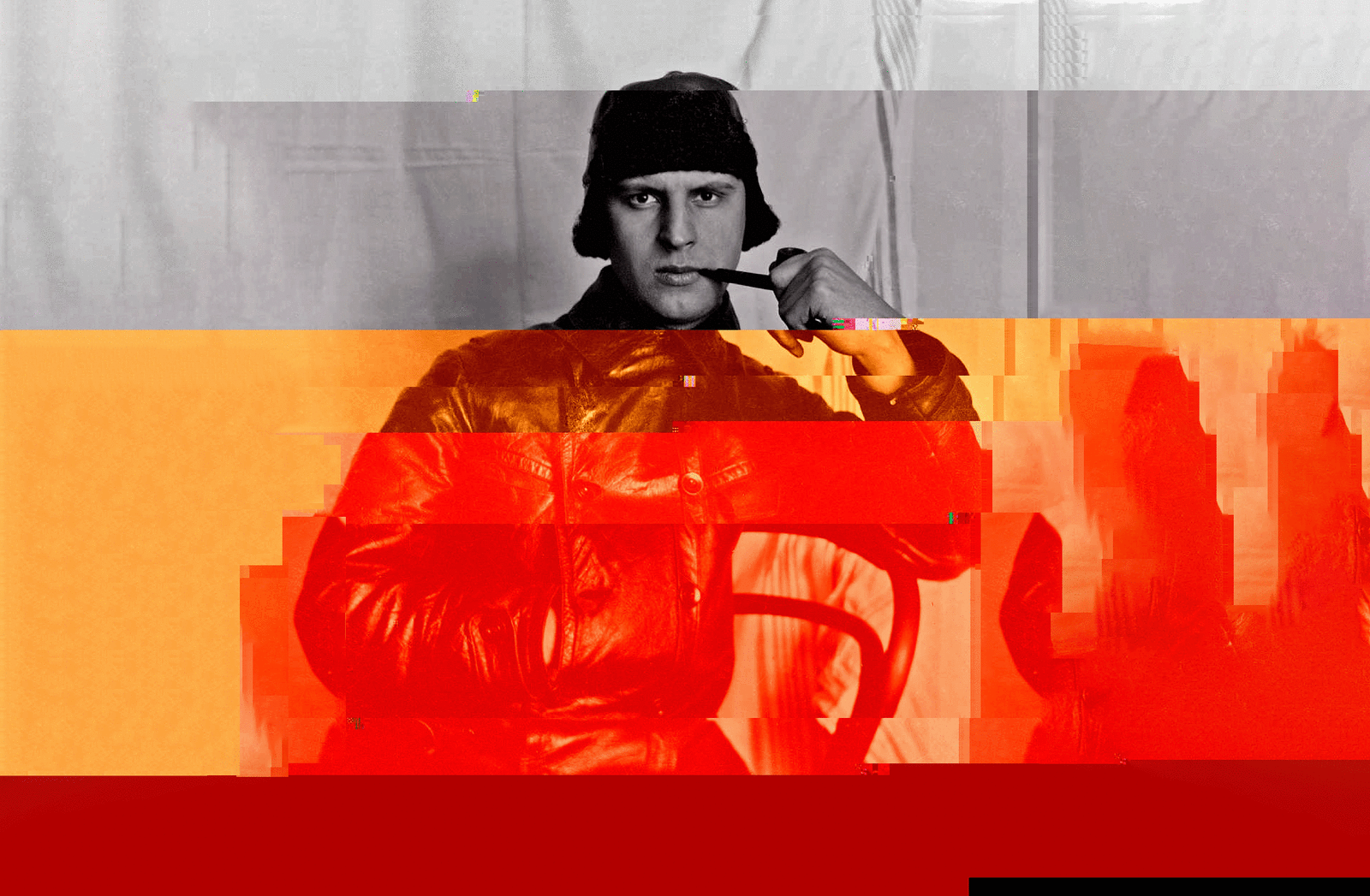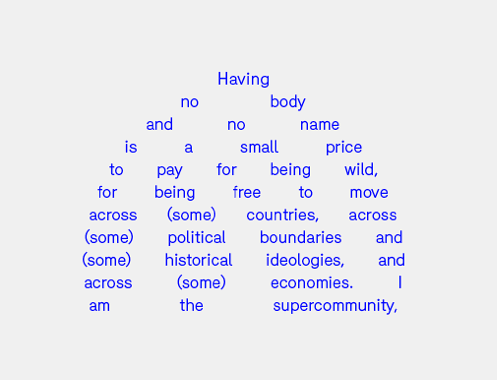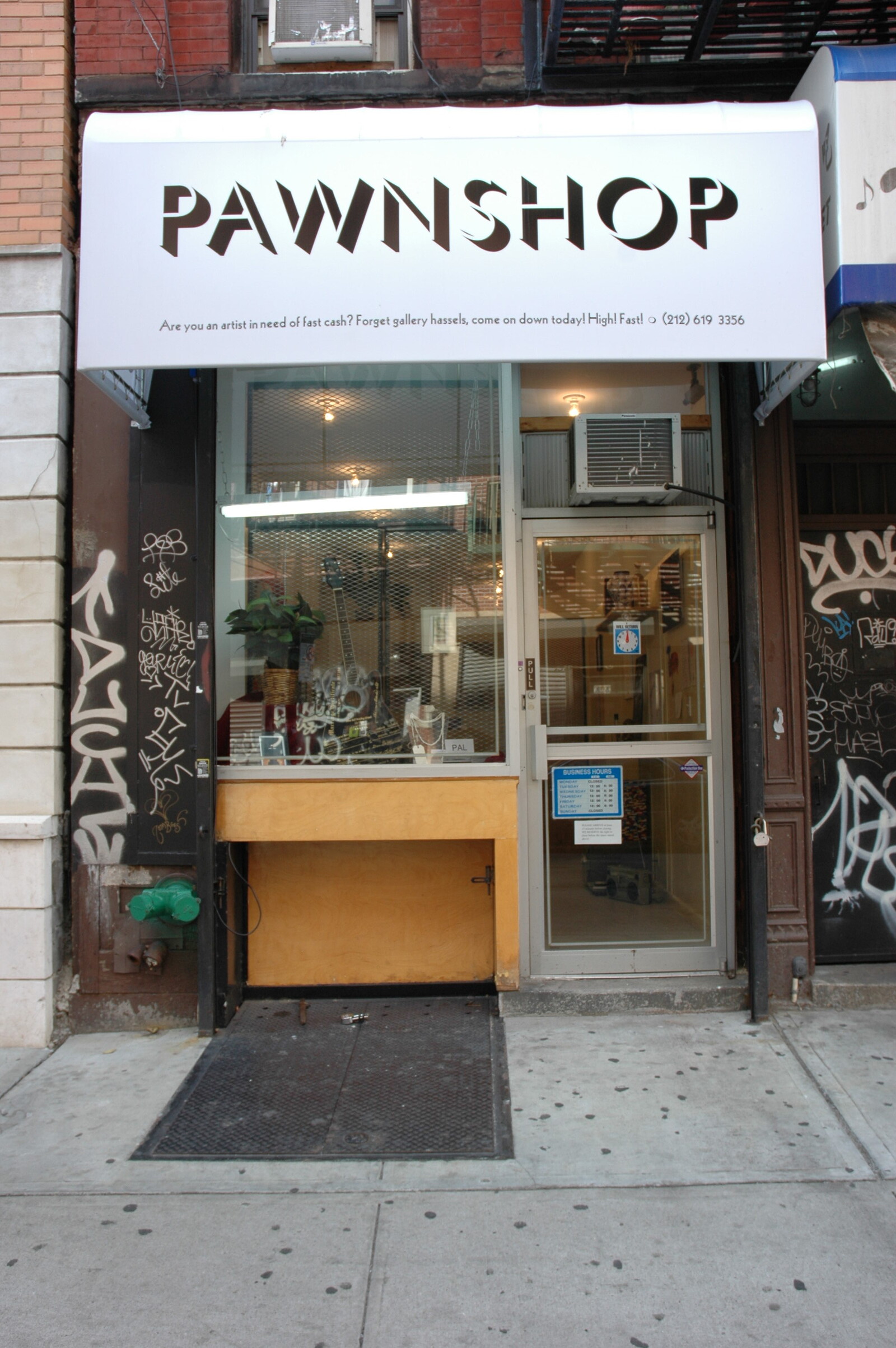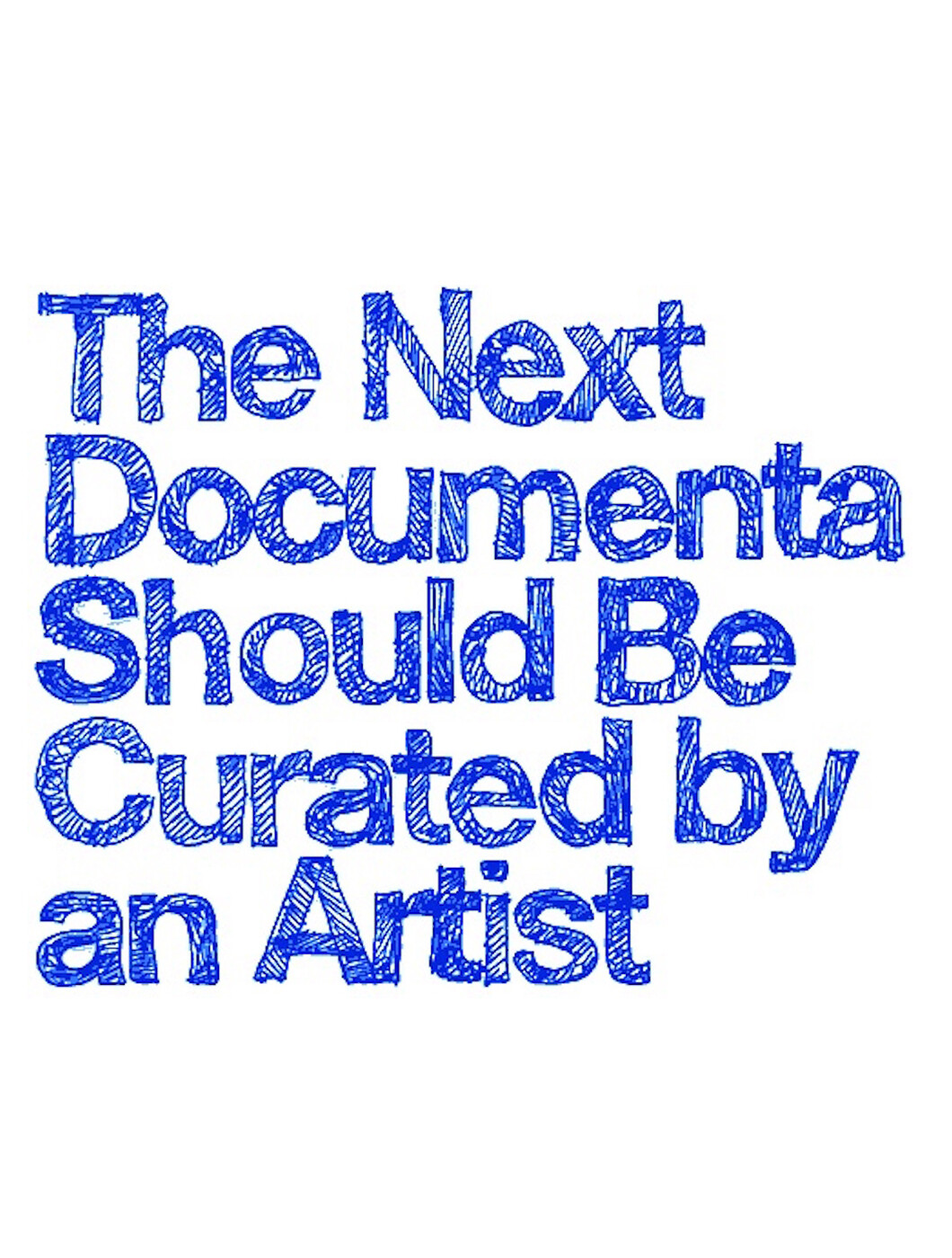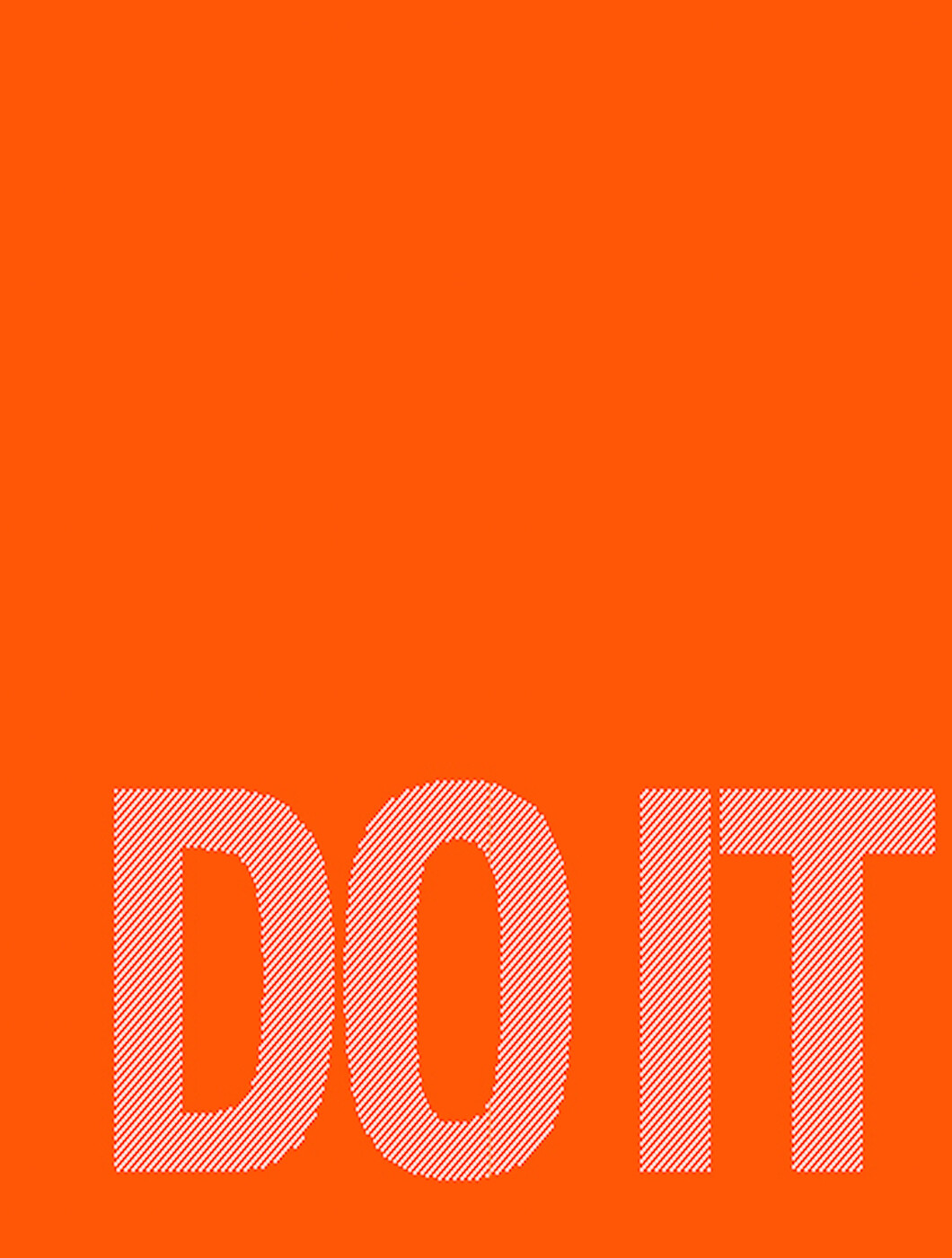You Can’t Trust Music
e-flux presents You Can’t Trust Music (YCTM)—a digital exhibition and research project curated by Xenia Benivolski.
In their influential essay, “Experiments in Civility,” Bill Dietz and Gavin Steingo start by saying: “It would seem that in many circles, music has a bad reputation. You can’t trust music. One minute a piece of music is proclaiming the heights of Western civilization, the next minute the same piece is the sound track to genocide. Music is unfaithful, a slippery character. Or is it the other way around? Is it we who are slippery? Is it who or what we are in music—who or what music lets us become?” [1]
Unlike literature or art, music appears to be nonrepresentational, at least at first. “But music also is a place of sorts,” says musicologist Holly Watkins, “replete with its own metaphorical locations, types of motion, departures, arrivals, and returns.”[2] Songs articulate distance, texture, and intent. They respond to the acoustics of landscapes and social structures; they are amplified in some spaces and dampened in others. The quality, cadence, and rhythm of sounds can document changes in topology through their evolution. By listening to sounds—and the way they have been transcribed, adapted, and memorialized—we can trace otherwise invisible political interventions into landscapes and soundscapes and, in return, understand these interventions as documents, instructions, or scores.
Music is a powerful mnemonic device. When it comes to language as well as place, the human brain uses phonology—how languages organize sound in the brain—to aid in memorization. It is the song’s structure that helps us remember other information about it. In other words, the melody helps us recall the lyrics. But every collective experience is made up of structurally subjective impressions. Working from an assumption that internal and external soundscapes resonate in collective execution, You Can’t Trust Music (YCTM) is a research project connecting sound-based artists, musicians, writers, and thinkers who explore the way that landscape, acoustics and musical thought contribute to the formation of social and political structures. This project was developed by Xenia Benivolski, with significant support from Julieta Aranda, throughout 2020 and 2021, a time when people were confined to their homes and one of the only ways to be transported was through the body’s association of the sonic with the spatial. YCTM is a digital exhibition whose primary medium is sound and music, accompanied by texts that complement, rather than explain.
With works and texts by Ryuichi Sakamoto and Shiro Takatani, Victor Wang, Sachiko Namba, Matt Smith (Prince Nifty), Christopher Willes and Anne Bourne, Kurt Newman, G. Douglas Barrett, Stefana Fratila, Abhijan Toto, Pujita Guha, Sung Tieu, Apichatpong Weerasethakul, Ayesha Hameed, Felicia Atkinson, Michael Nardone, Ryan Clarke, Bitsy Knox, Jessika Khazrik, Julian Yi-Zhong Hou, Tessa Laird, Elin Már Øyen Vister, Rachael Rakes, Reem Shadid, Bill Dietz, Gavin Steingo, Xenia Benivolski, Julieta Aranda, and Shock Forest Group (Katya Abazajian, Sheryn Akiki, Daria Kiseleva, Jelger Kroese, Susanna Gonzo, Nicolás Jaar, Paula Dooren, Pantxo Bertin, Pamela Jordan, Erica Moukarzel, Simon Skatka, Sjoerd Smit, Bert Spaan, and Axel Coumans)
YCTM is presented on a platform designed by Knoth&Renner and developed by Knoth&Renner with Jonas Holfeld; it will unfold through four chapters, framed by an introduction and a conclusion. Each chapter is organized thematically with four or five artworks, and released every two-to-three months. Visitors to the site are encouraged to listen to the works in their entirety and can navigate through as the project develops.
YCTM on e-flux.com is made possible with funding from the Canada Council for the Arts. It is produced by e-flux and developed in partnership with M WOODS, NTT InterCommunication Center (ICC), Liquid Architecture, Kunsthall Trondheim, and Infrasonica.
[1] Bill Dietz and Gavin Steingo, “Experiments in Civility,” boundary 2 43, no. 1 (2016): 43.
[2] Holly Watkins, “Musical Ecologies of Place and Placelessness,” Journal of the American Musicological Society 64, no. 2 (2011): 405.
Reviews
“Two Kinds of Knowledge Shaking Hands: A Conversation About You Can’t Trust Music” •
In the winter of 2020, as planes momentarily cleared our airspace, making room for birds, winds, and silences, Julieta Aranda and Xenia Benivolski were talking about the ways in which soundscapes are marked by historic events. These talks led to further questions about the nature of sound and music, and the temporal potential of melody to produce novel…
In the winter of 2020, as planes momentarily cleared our airspace, making room for birds, winds, and silences, Julieta Aranda and Xenia Benivolski were talking about the ways in which soundscapes are marked by historic events. These talks led to further questions about the nature of sound and music, and the temporal potential of melody to produce novel forms of knowledge, variation, improvisation, and reproduction. What histories can be traced through subtle changes in a sound’s address? What registers in terms of materials, communities, and political movements during pivotal moments in time? This conversation took place halfway through the resulting project, You Can’t Trust Music (the title of which comes from Bill Dietz and Gavin Steingo’s 2016 text Experiments in Civility), in which, with Aranda’s help, Benivolski has developed a curatorial program that brings together artists, musicians, researchers, and authors in a polyphonic arrangement of voices that resonates thematically throughout different times, genres, and landscapes.
Xenia Benivolski: Around the time we started talking about this project, you and I were both reflecting on the temporality of music. You of course have a prolonged interest in time and circulation, and during the pandemic I just really wanted to experience something temporal. This is how it started. Thinking again from these first conversations, we wanted to explore the strange function of the score as a template for publishing, as both a map and a document.
Julieta Aranda: Well, music is important to me mostly because it’s time-based. Time-based constructions, like music and film, are expressions that you can’t really summarize into an image or a note. It’s hard to encapsulate their information; you have to go through them, you have to walk with them and allow them to color a moment — their information becomes implicated in memories. When it comes to music, it can augment memory in a very intense way. And then you have the writing — the score. A score is like a memory map. Within it, you make notes — notations — so that you can find your way through that particular sound again. If you can read music, there is an effect when you read — where you can almost hear the memory of the sound. So I have always considered a score as a form of writing that is somewhere between transcription, memory making, and mapping.
XB: There is also a bit of time travel involved, because a score is both instructional and commemorative: it exists in the past and in the future, potentially. And then there’s the ability to really slow down the moment, or alter it even.
JA: What you can do with tempo, which is also something related to time, is quite fascinating. The score indicates, as you know, how fast or slow you should go. But if you play around with the tempo, and you really slow a score down, playing it as a largo or an adagio, what happens is that it is not only the speed of the sound that goes faster, its affective quality also changes. A score happens in time whenever you decide to play it. It is a notation that can be recreated at any moment. But the affective qualities change depending on the tempo. Beyond music, what happens when you change the pitch of a voice? It gets comical if you go into a very high pitch, and otherworldly or scary when you go into a very low pitch. And then there are pitches that are outside of the human range and you don’t know how they might affect you, or the world around you.
XB: Early in the pandemic, NASA released a sound recording from Mars, and I was just transfixed by it. Because you can really be transported to this other spatial dimension. At the same time, I was wondering if there’s something I wasn’t hearing — something inaudible that was being communicated to me within that range, which I was absorbing without knowing. There’s something a little paranoid about sound. Parts of the project also resonate with this feeling that somehow sound’s proximity to both conspiracy and spirituality is science-fictional in nature. So there is a rogue agency to it, or as the name, borrowed from Dietz and Steingo, implies, a slippery nature to music that makes us confront ourselves, an echo. I’m from suburban Moscow, and because it’s marked by big concrete buildings, voices echo, so everyone has to temper their voice. That conspiratorial way of talking creates a conspiratorial society in one way or another. And it’s hard to say what came first, whether the intent was to create a secretive atmosphere or if the architecture had incidentally encouraged this self-perpetuating culture.
JA: Sound as place has always existed. Think of bats and echolocation! (Or of Narcissus and Echo. Maybe Narcissus was a bat!) Sound is a big part of affective memory: you can hear the way in which sound bounces and how it makes you feel a space and how it is also communicated through recordings which carry with them the acoustics of the places where they were made. So you feel a double spatial situation: I’m listening to this recording while I am on my bicycle, but because of how sound location works, I’m also inside a cathedral, or a submarine, or wherever it was recorded. I am thinking now about Grand Central Station in New York, where there is an acoustic arch that makes it so that if you go to a corner and whisper, a person across the arch in the other corner will be able to hear what you are saying. That is fascinating because it does not correspond to the way that we understand sound functioning; if I’m whispering, nobody should be able to hear me. And yet… those moments have a strange, surprising quality because they incorporate the environment into meaning. Now, talking about what it is like for sound and composition to incorporate their environment, here is a story: When I was living in Australia during the pandemic, I recorded the Lyre bird, whose own song is fragmentary and borrowed. Its song is beautiful, uncanny and completely tragic all at the same time, because it incorporates the sounds of its own extinction: you hear the chainsaws of the illegal loggers and the tourist camera shutters and so on. A thousand years ago he (the singing Lyre birds are the males) would have had a very different repertoire. His current song is haunting and incredibly sad.
XB: I wonder whether changes in bird song can offer up different perspectives on history, and if humans reproduce the sounds of their own demise too. Maybe the sound of Mars is the sound of our demise. One work, from Stefana Fratila, was actually created at NASA (I want to leave this Earth behind, parts 1 and 2, 2022). It’s an optimistic work that elaborates on abilities and disabilities in extra-terrestrial climates, and it tries to emulate the sounds of different planets. I’m really interested in the possibility of receiving profound information through music. Especially when it finds a reflection in historical contexts. For example, Ryuichi Sakamoto’s project (sound piece from the work IS YOUR TIME, from the exhibition “seeing sound, hearing time,” M Woods Museum in Beijing, 2021) in YCTM incorporates a piano that was washed off the shore during the Fukushima nuclear disaster in 2011. Sakamoto implies that the voice of the piano contains information about that disaster that is not accessible in text, and part of it has to do with the efforts taken by the Japanese government to conceal the scale of damages incurred in Japan. The piano is able to kind of vocalize some of the concerns that we are not privy to, non-verbally, non-textually, things that are nonetheless contained within it. It connects to other projects that touch unwilling registers: the Shock Forest Group’s YCTM project (This forest was built to be bombed, and Entity, 2021) is about a forest near Amsterdam where the Dutch government has done all of its military testing. So the recordings that take place in that forest communicate that knowledge acoustically.
JA: I think that kind of encoding is very precise, and it’s very specific to music. It’s not just notes. It also encodes functions, which is different from regular writing. Music writing encodes information in a way that is not as direct or descriptive as text. It’s a different way of containing and encapsulating information, and the way in which it’s read is also different. If you are an interpreter, a score might tell you to “play that note softly, weep with your fingers,” and if you are listening, a lyrical sound can make you weep without need for words. I think about that when you’re talking about the Sakamoto piece and the information that is contained within: is it in the notes, or the succession of notes? Is it about the place, your position as a listener, or as a reader of this particular encoding? Where is the information? How is it touching you? Where is it touching you? It’s an open reading of things that goes beyond regular writing or narration of history. If we think about sound quality — for example when it comes to the creation of sound environments, and foleys, sthere are sound conventions that signal horror, “technical” sounds that signal science-fiction scenarios, and “haunting” sounds that signal the supernatural. I am also interested in thinking about how sound becomes technical — I am remembering the Concord, and how revolutionary it was that it could travel faster than sound and cross “the sound barrier.” What happens once you cross the sound barrier and experience the sonic boom? Is there any relationship between the speed of sound and the speed of light? These transformations of sound — from a means of communication to a technical instrument — are the most pressing when you think about how sound can become weaponized. Not only terrible neighbors that play loud music in apartments with bad insulation. It has allegedly happened with the Havana Syndrome, or when sound has been used as a torture instrument. So consider the range: from chirping birds
and harmonies of nature to different learned responses associated with certain sounds. Because within that system, sound is a weapon too. Music moves, changes, represents, symbolizes. Like when it comes to the formation and establishment of nation states, and how nation states always have a national anthem.
XB: National anthems speak to a social space, because they represent a grouping of people: an orchestra. These social formations are so directly tied to military formations. In contrast, Julian Yi-Zhong Hou’s work Grass Drama (2020) and Chanelle Adams’s This is the deal (2022) nod to the secret communication between plants. Of course, the word “drama” implies a turbulent social narrative within nature itself. In Sound Study (Brainwaves) from 2020, Sung Tieu’s brainwaves are recorded as they respond to sounds associated with the Havana Syndrome, which sound like dolphins or chirping birds. In her text on the work, Pujita Guha describes the sound as belligerent (Pujita Guha, Your Brain is on Belliphonic sounds, 2022). So again we experience sound as weapon, and its power is concentrated in that invisibility: the cloak, the bell, its acousmatic quality. But sometimes I feel that as long as I try to understand sounds they’ll all lead to weapons and violence. I wonder if it’s a factor of the time. Its kind of interesting to have a record of this time, because this is the mood of the world right now. So in a way it also registers something from current conditions. It speaks to the moment and listens to the moment without obsessing over words. I think it’s appropriate. Sometimes you can just experience birdsong, for example, and enjoy it. But there are people working on particular research that describes how one gets to particular sounds, and I appreciate that too; you need to situate or explain certain things. If no one tells me the sound is recorded on Mars, how would I know it’s not a recording of a vacuum cleaner? Sometimes it’s nice not to know. But if it takes you elsewhere, then you need to have the context and the additional information. I think it’s nice to have things mixed.
“You Can’t Trust Music, Chapter 3”
In Musical Vitalities , Holly Watkins describes the life of music—tenuous, metaphorical, contingent and mortal—as the cross-modal interpretation of sounds. Sounds are ambiguous, they alert us to dangers and lures, both animate and inanimate. “Music retains that ambiguity; music is the art of possibly animate things”. Chapter 3…
In Musical Vitalities, Holly Watkins describes the life of music—tenuous, metaphorical, contingent and mortal—as the cross-modal interpretation of sounds. Sounds are ambiguous, they alert us to dangers and lures, both animate and inanimate. “Music retains that ambiguity; music is the art of possibly animate things”. Chapter 3 of YCTM explores convergence between danger, safety, community, prayer and the flow of information through underwater cables, generations, skies, animals and sediments. “Listening to music, we continuously experiment with being other.” (Watkins, 1972)
In A Sediment Diversion for the Audible World, coastal geologist and musicologist Ryan C Clarke talks to Michael Nardone about the sedimentation and stratification of both geological and sonic landscapes. The interview is animated by a field recording of geologist Erinn Buhyoff, improvised on tenor saxophone with a stationary field recorder at his feet. Traveler’s Prayer, an interview with Steve Reich details the thought process behind his most recent composition, which conflates one’s journey through the skies with a passage into the afterlife. Words “force you to do something that you might not have anticipated”: the form of a prayer comes from the spectral power of language.
Using AI-generated lyrics, Lou Sheppard’s Rights of Passage, presented with the Art Gallery of York University, animates plant species experiencing the re-diversion of rivers and creeks, imagining riparian zones as sites of queer emergence. Through collaboration, conversation, and cross-planetary listening sessions, Ayesha Hameed’s Radio Brown Atlantis explores the potential co-mingling of languages and ecosystems to imagine books as a technology that is aural, nautical and dispersed. Speaking with Christopher Cozier, Keyna Eleison, Natasha Ginwala, Ranjit Kandalgaonkar, Manuela Moscoso, Bonaventure Soh Bejeng Ndikung, Pablo José Ramirez, Shuddhabrata Sengupta, Sancintya Mohini Simpson and Khal Torabully, Hameed asks what would our sea’s own archive consist of? What would be the ways in which winds, currents, flora, fauna, time and stars would imprint themselves?
Developed in collaboration with Liquid Architecture, Tessa Laird’s essay Locating Echoes attempts to bridge the existential void that separates us from bats. It is presented alongside video works by Liang Luscombe and audio compositions created using bat samples by Joel Stern. Responding to Nagel’s 1974 text What is it like to be a bat? Laird writes “I fling myself across the abyss of species difference. I am a bat, imitating a human, imitating a bat.”
You Can’t Trust Music (YCTM) presented by e-flux is a research project connecting sound-based artists, musicians, writers, composers, and writers and exploring the way that landscape, acoustics, and musical thought contribute to the formation of social and political structures. It is presented on a platform designed by Knoth&Renner and developed by Knoth&Renner with Jonas Holfeld.
YCTM is curated by Xenia Benivolski



